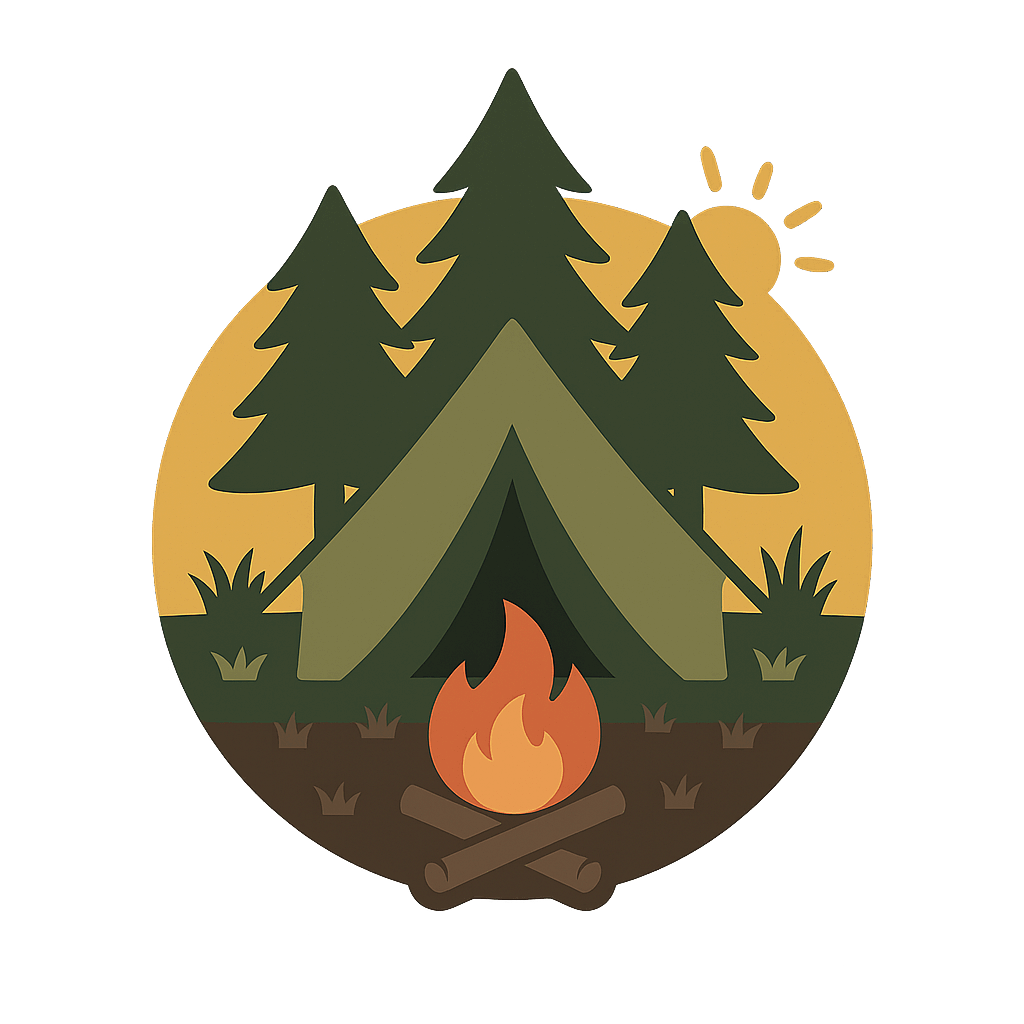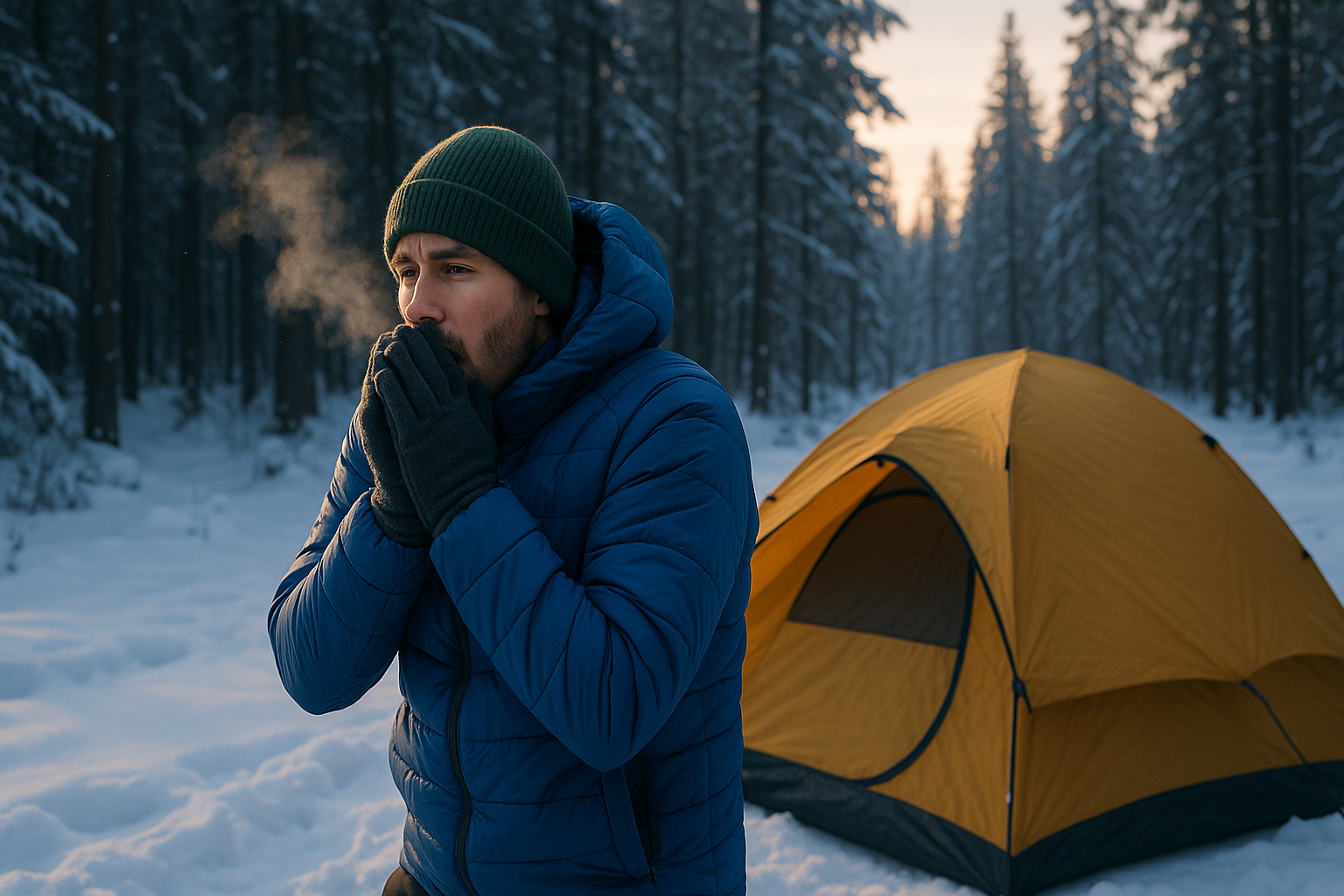You’ve layered your clothes.
You’ve wrapped yourself in a sleeping bag rated for freezing nights.
You’re off the cold ground and even used your warmest socks.
But you’re still freezing — and the cold creeps in with every breath.
Why?
Because you’re exhaling heat into the night air — over and over again.
In sub-zero environments, unprotected breathing is one of the fastest, least-known ways campers lose warmth.
This guide shows you how to prevent that, using field-tested breathing techniques and ultralight gear hacks that don’t weigh down your pack — or leave you gasping in condensation.
 Why Your Breath Is Draining Heat
Why Your Breath Is Draining Heat
Your body is a furnace — and every time you exhale, you release:
- Warm, moist air that you spent energy heating
- Water vapor that creates evaporative cooling
- Carbon dioxide that triggers cold air draw-in if unregulated
In cold conditions, this creates three problems:
- You heat the surrounding air instead of yourself
- Condensation forms in your bag or around your face, making you colder
- You breathe in freezing air, which forces your body to work harder to warm it up
In short: You’re warming the wilderness — not yourself.
 What Most Campers Get Wrong
What Most Campers Get Wrong
Most campers either:
- Sleep with their face uncovered = massive heat loss
- Pull their bag over their mouth = moisture trap + wet insulation
- Breathe into their jacket = cold breath circulates back onto chest

You need real airflow — but filtered and buffered for warmth.
 1. Use a Buff or Neck Gaiter as a Breath Filter
1. Use a Buff or Neck Gaiter as a Breath Filter
A lightweight buff is one of the most effective tools for managing breath loss.
How to use it:
- Pull the buff over your nose and mouth at night
- Sleep on your side to prevent damp buildup
- Tuck the bottom into your base layer to trap rising warmth
This does three things:
- Warms incoming air
- Captures outgoing moisture before it hits your bag
- Prevents frozen nose/lip exposure without smothering you
Choose a quick-dry synthetic or merino blend — cotton will freeze.
 2. Create a “Breathing Tunnel” with Your Bag or Quilt
2. Create a “Breathing Tunnel” with Your Bag or Quilt
If you’re using a mummy bag or down quilt:
- Zip up fully
- Pull the hood drawstring to just below your mouth
- Leave a small opening for air — like a tunnel
- Point your face downward or toward the zipper seam
Why this works:
- Warm exhaled air stays near your chest
- Incoming air has to pass near your warm collar before it enters
- Reduces draft shock
Never breathe directly into the bag. Moisture will kill your insulation.
 3. Field-Tested “Two-Stage Breathing”
3. Field-Tested “Two-Stage Breathing”
This is a breathing technique, not a gear tip — but it’s powerful.
The technique:
- Inhale gently through your nose
- Hold for 2–3 seconds
- Exhale slowly through pursed lips
This does 3 things:
- Reduces the amount of cold air entering rapidly
- Warms air slightly via nasal passageways
- Slows down respiratory heat loss over time
It also slows your heart rate — helpful for sleep and conserving energy.
 4. Face Mesh or Mask System (For Ultra-Cold Zones)
4. Face Mesh or Mask System (For Ultra-Cold Zones)
When camping in extreme cold (snow caves, alpine ridges, open bivy):
Use a face mesh mask (like a balaclava with breathing vents or a frost mask). These are designed to:
- Warm air before it hits your lungs
- Reduce condensation with ventilation channels
- Cover your entire head, neck, and face with no gaps
Look for:
- ColdAvenger masks (popular with Arctic trekkers)
- Fleece-lined masks with mesh vents (hiking and military-grade options)
Pros:
- Total breath protection in brutal cold
- Stops nosebleeds, coughs, and dry throat overnight
- Can be used while hiking too
Cons:
- Slightly bulkier (4–6 oz)
- May feel restrictive if not fitted well
 5. Breath into a Designated “Sacrificial” Layer
5. Breath into a Designated “Sacrificial” Layer
If you must breathe into something — make sure it’s not your sleeping bag.
Use a sacrificial layer like:
- A microfiber towel
- A spare base layer
- A small buff or bandana
Hold or wrap this lightly over your mouth/nose to catch condensation, then hang it to dry next day.
Never double-use this item for insulation or sleeping after — it’ll stay damp.
 6. Wear a Hooded Base Layer That Channels Exhaled Heat Back Toward Your Core
6. Wear a Hooded Base Layer That Channels Exhaled Heat Back Toward Your Core
Most campers sleep with their heads uncovered or in a loose hood. But in sub-freezing conditions, a fitted hooded base layer does more than trap heat — it can redirect your breath.
How It Works:
- Exhale downward into your hood space
- The hood traps that warm air and funnels it down toward your chest
- Creates a passive heat loop that warms your torso without moisture buildup
This works best with a merino or fleece-lined hooded shirt under your sleeping bag hood.
Bonus: You’ll also eliminate neck drafts and prevent heat loss at one of the body’s highest-radiating points.
 7. Combat “Frozen Nose Syndrome” with a Partial Buff Tuck
7. Combat “Frozen Nose Syndrome” with a Partial Buff Tuck
One of the most common cold-camping complaints?
“My nose freezes, but if I cover it, I can’t breathe.”
Fix:
- Fold your buff in half horizontally
- Tuck the lower half just below your nose
- Keep the upper half hovering slightly above the nostrils like a wind shield — not a tight mask
This allows:
- Free airflow without suffocation
- Reduced wind impact
- Warmer microclimate around your nose tip
This trick alone can help you fall asleep faster by relieving cold-face anxiety.
 8. Practice “Low Flow” Respiration While Falling Asleep
8. Practice “Low Flow” Respiration While Falling Asleep
In cold camping, you’re not just losing heat through breath — you’re wasting calories generating that heat.
Use this technique during sleep onset:
Low-Flow Breathing (Cold Sleep Mode)
- Breathe in for 4 seconds through the nose
- Hold for 4 seconds
- Exhale gently for 6–8 seconds through slightly parted lips
- Repeat 5–10 times as you relax
Results:
- Slows respiration rate = less warm air lost
- Keeps your body in rest-and-digest mode
- Calms adrenaline spikes that come from being cold
Bonus: This also improves heart rate variability and sleep depth.
 9. Position Your Face Close to Core Heat Without Steaming Up Your Bag
9. Position Your Face Close to Core Heat Without Steaming Up Your Bag
If you can’t handle full mask coverage, use strategic face placement.
Setup:
- Sleep on your side
- Tuck your head forward so your face is 6–8 inches from your chest
- Let your breath warm your collar zone, not the inside of your bag
This reduces:
- Heat loss from exhalation
- Risk of frostbite on nose/lips
- Condensation near sleeping bag baffles
This is how seasoned mountaineers sleep in minimalist alpine setups — with a “face pocket” that warms with every breath but doesn’t get wet.
 10. Warm Your Breath From the Inside Out: Fat Before Bed
10. Warm Your Breath From the Inside Out: Fat Before Bed
Yes — this is a respiration tactic too.
Why:
When your core body temp drops, your respiration rate increases to compensate — which exposes you to more cold air.
But if you boost internal thermogenesis with slow-burning calories, you:
- Stay warmer longer
- Breathe slower
- Reduce net respiratory heat loss overnight
What to Eat:
- 1 spoon of peanut butter, trail butter, or ghee
- 1 cube of cheese or nut bar
- Small carb-fat combo (like oats with olive oil drizzle)
It’s not just fuel — it’s your “internal hand-warmer” against overnight breath chill.
 Lightweight Breathing Protection Kit (Under 5 oz Total)
Lightweight Breathing Protection Kit (Under 5 oz Total)
| Item | Weight |
|---|---|
| Merino wool buff | ~1.5 oz |
| Synthetic balaclava (with vent) | ~2.5 oz |
| Spare microfiber towel or cloth | ~0.8 oz |
Total: ~4.8 oz
Impact: Can reduce sleep-related heat loss by 10–15% in freezing conditions.
 Bonus: Signs Your Breathing Is Making You Colder
Bonus: Signs Your Breathing Is Making You Colder
Be alert for these nighttime symptoms:
- Dry throat or sore sinuses
- Condensation frost around the neck or bag collar
- Waking up shivering even with good gear
- Burning lungs in sub-zero air
These are signs your body is losing energy through respiration and overworking to keep up.
 Camp Setup Bonus: Don’t Face Into the Wind
Camp Setup Bonus: Don’t Face Into the Wind
Whether in a bivy sack or open tarp, always sleep with your head downwind.
Cold air is heavier — it pools and flows like water.
If you sleep uphill or into airflow:
- You breathe more frigid air
- Drafts keep hitting your face
- Nose and lips dry out
Instead:
- Sleep lower on your pad
- Use backpack or dry bag near head as a wind buffer
- Turn your face slightly down or toward torso for radiant warmth
 Conclusion: Warm Sleep Starts With Smarter Breathing
Conclusion: Warm Sleep Starts With Smarter Breathing
In survival conditions, every degree counts — and you lose more heat through breath than most campers realize.
You don’t need a furnace to stay alive.
You just need smart gear, good layering, and tactical breathing that works with your body — not against it.
Next time the cold creeps in, don’t just zip up tighter — breathe like your warmth depends on it.
Because it does.


 How to Prevent Heat Loss Through Respiration While Camping
How to Prevent Heat Loss Through Respiration While Camping